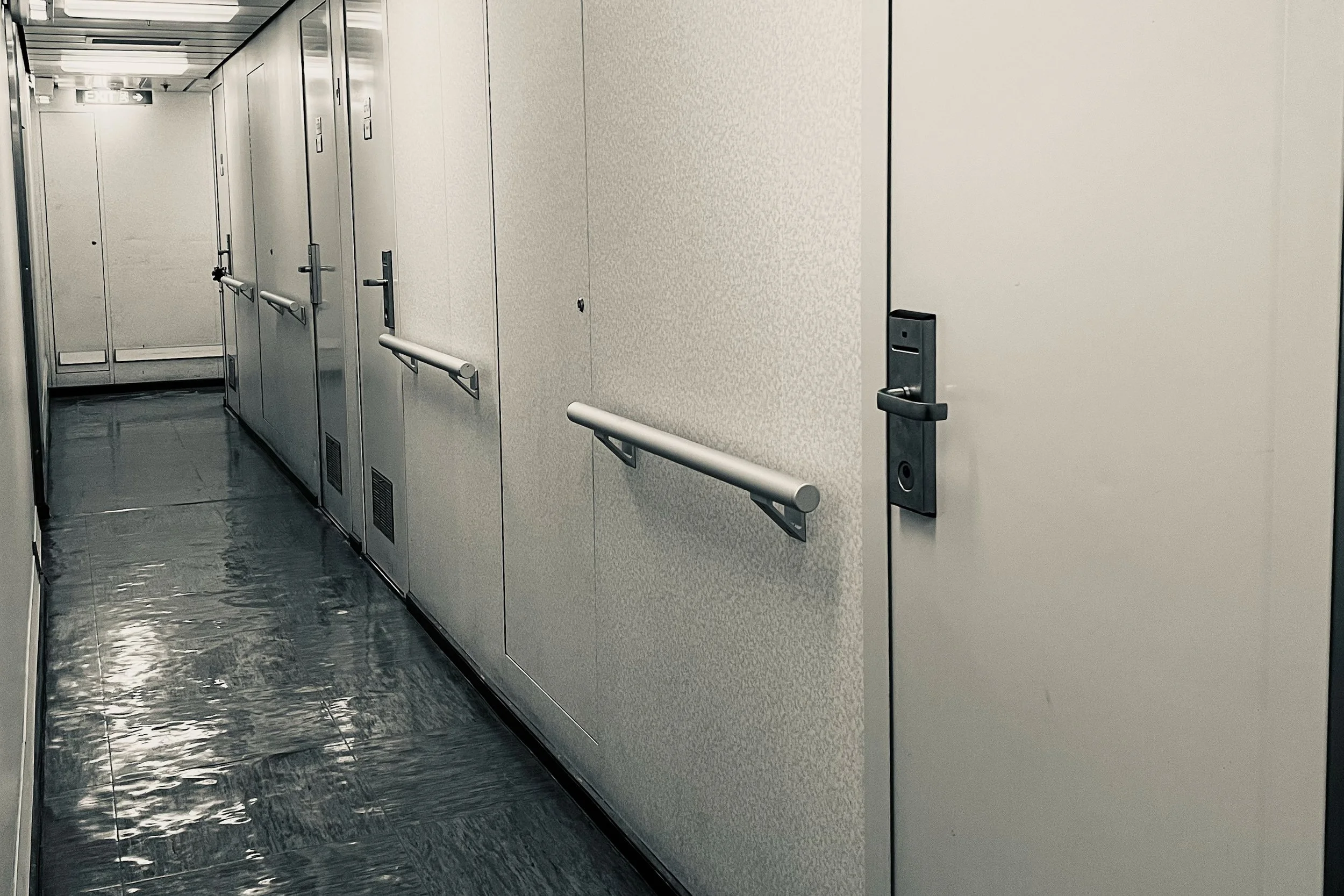Calling a Cruise Ship Crew Cabin Home for Months at Sea
Do Cruise Workers Live on the Ship? Where Do They Sleep?
Behind the grand staircases and glitzy lounges are narrow corridors, LED lights, and quiet little rooms that crew members call home for months at a time.
We don’t just work on board – we live here. Our lives unfold in the same ship that hosts a thousand holidays. Work, sleep, rest, routine – it all happens behind the “Crew Only” doors, far away from the main stage.
Was there anyone who thought crew would transport back to land at night? ...
They’re not advertised, not photographed, and certainly not built for show – but to the thousands of us who live in them, these cabins are part of our everyday rhythm.
Here’s a look at what crew cabins are really like – not from the outside looking in, but from the inside looking out.
Types of Cabins
Cabins aren’t one-size-fits-all. Who you are, what department you’re in, and how long you’ve been working at sea all play a role in where you end up.
The most common arrangement is a shared cabin – usually with one roommate, sometimes two, occasionally three. These rooms are practical and compact. Think bunk beds, shared wardrobe space, and a small desk squeezed somewhere in between.
Higher-ranking officers or staff from certain departments (like bridge crew) may have single cabins. These feel almost luxurious by comparison – private bathrooms, a bit more floor space, sometimes even a window if you’re lucky.
On older ships, you might still find triple or quad cabins. Four people to a room, with curtain dividers and just enough space to stand between bunks. Not ideal, but many start out there. It’s part of the journey.
Inside the Cabin
If you’re imagining a hotel room, adjust your expectations. Crew cabins are designed for function first.
Most come with the basics: a bunk bed (or two), a desk and chair, a wardrobe or locker per person, a shelf, a television, and a mini-fridge (if you’re lucky). There’s a small bathroom, where you can touch the sink, toilet, and shower without taking a step. On some ships, even that’s shared with another cabin next door.
Storage is minimal, so you learn to get creative. There’s no room for clutter, but there’s space enough for a few home comforts – a photo from home, fairy lights, maybe a small speaker.
Cabin walls are thin. Conversations, alarms, and laughter travel easily through them. But in the stillness of early mornings or late nights, your cabin can feel surprisingly peaceful. It becomes a sanctuary, however small.
How Much Space is There?
It’s hard to put into numbers, but the short answer is: not a lot.
Still, two people can stand comfortably in the centre of the cabin. You learn to move in sync, taking turns to change clothes or brush teeth.
Personally, I find the space manageable. Maybe it’s because I’m small-bodied, or maybe because growing up in a small home taught me how to live compactly. But I often wonder how my taller, broader colleagues manage. There’s barely room to stretch, let alone swing a cat.
That said, I’ve always packed light. A few clothes, some essentials, not much else. I like having floor space.
But I’ve seen cabins – especially female cabins – with cupboards bursting at the seams, shoes lining entire corners, and shelves groaning under the weight of products and snacks and personal things.
Some people make it feel like home. Others, like a portable closet.
Where Cabins are Located
Most crew cabins are located on the lower decks, often below the waterline. That means no windows, no sea view – just solid metal walls and dim lights. They’re accessed through narrow hallways and behind doors marked “Crew Only”.
Higher-ranking officers and select departments are placed higher up. These officers' cabins are more spacious, and occasionally even have a porthole. But for most of us, our cabins sit deep in the belly of the ship – down winding corridors only the crew know how to navigate.
Some are near the hum of machinery and vibrate constantly. Others are right by staircases or elevators, where you hear everything. You don’t choose your cabin – you adapt to it. You learn its quirks, the noises it makes at night, and how to navigate there half-asleep after a long shift.
A Small Space, But Still Yours
For all its limitations, a crew cabin is still a place to return to when your shift ends. It’s where you wind down, call home, or simply lie down in silence for a moment.
It’s not private in the way land-based living might be, but it teaches you to live more lightly. To get along. To create small pockets of peace in the middle of chaos.
It might not be where you expected to end up. But for a season, it becomes your space–and that, somehow, is enough.














